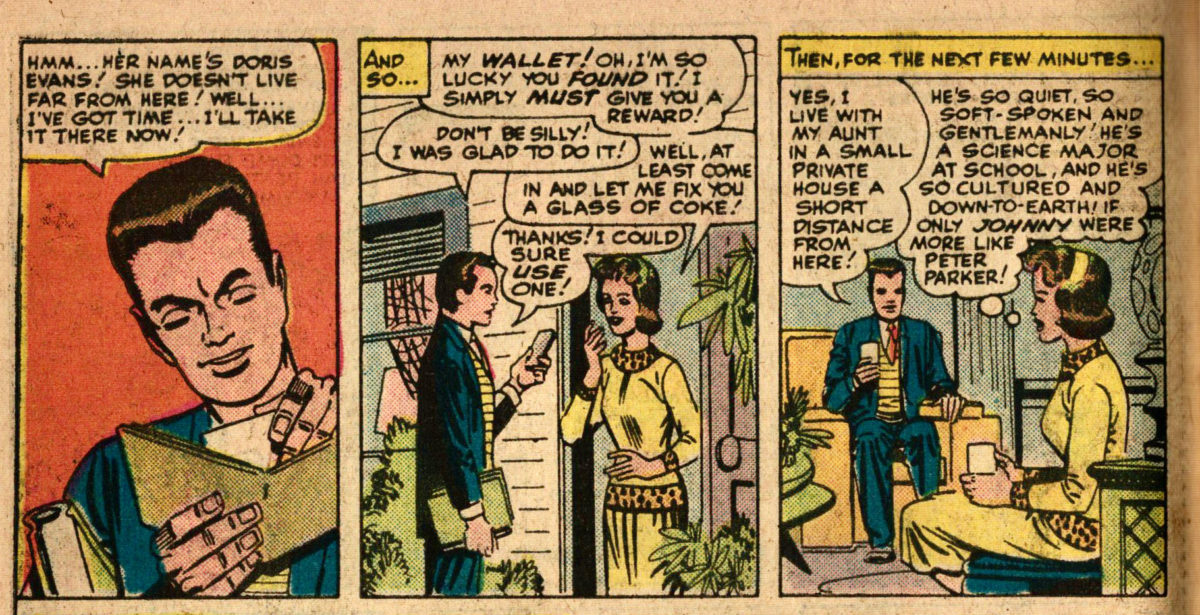Featuring: Thor
Release: May 5, 1964
Cover: July 1964
12 cents
Written fairly well by: Stan Lee
Drawn not too badly by: Jack Kirby
Inked kinda nice by: Chic Stone
Lettered pretty fair by: Art Simek
18 pages

This issue picks up less than 60 seconds after the last issue ended. Cobra has stolen Thor’s hammer with a machine and Thor is about to revert to Don Blake.

I can’t believe we have another 18 pages of Thor fighting Cobra and Mr. Hyde.
This idea of spreading a story over multiple issues is becoming a thing. We made it through over a year of stories without it ever happening. Not only were stories resolved in an issue, but they were usually resolved within a dozen pages, leaving room for other stories. It takes a hefty 36 pages to conclude this battle. The famous origin of Spider-Man took only 11.
The first hint of change was the Fantastic Four battle with Dr. Doom taking place over Fantastic Four #16–17. But even that was really two distinct stories; the first just ended with Doom’s escape, so they had another Doom story right after. Amazing Spider-Man #11–12 is a similar flavor; each issue tells a complete story, but Dr. Octopus remains the villain across the issues. We’ve had the one big story, the Hulk story in Fantastic Four #25–26, which itself tied into plot threads from Avengers #2-5. But that was epic enough to justify its length. Giant-Man and Wasp inaugurated the pointless two-parter with their battle against the Human Top. Thor’s title has gone all in on the idea, as his battles with both Mr. Hyde and Tomorrow Man took two issues for no particular reason. Iron Man recently followed suit with his battle against Mandarin, also stretched over two issues.
The multi-part story will soon become the rule rather than the exception, including two giant upcoming epics. These multi-part arcs make deciding on a reading order difficult. In general, I’ve been trying to go month by month, but I’d also like to keep these multi-part stories together, which is going to require some shifting around.
Continue reading “Journey Into Mystery #106”
































